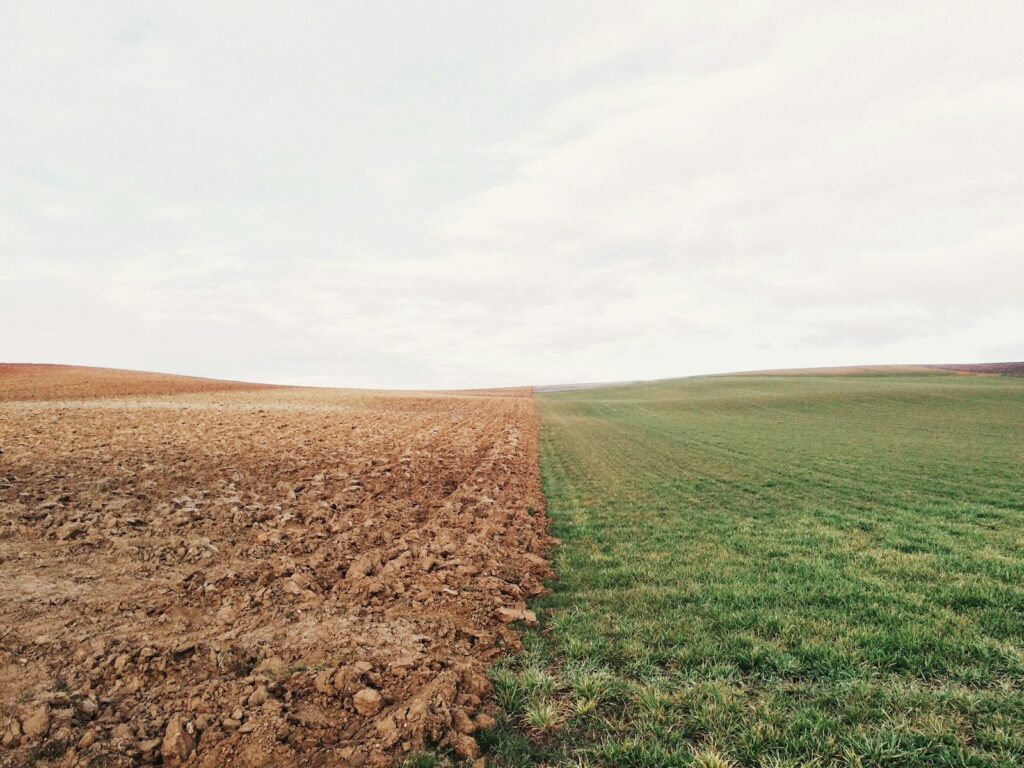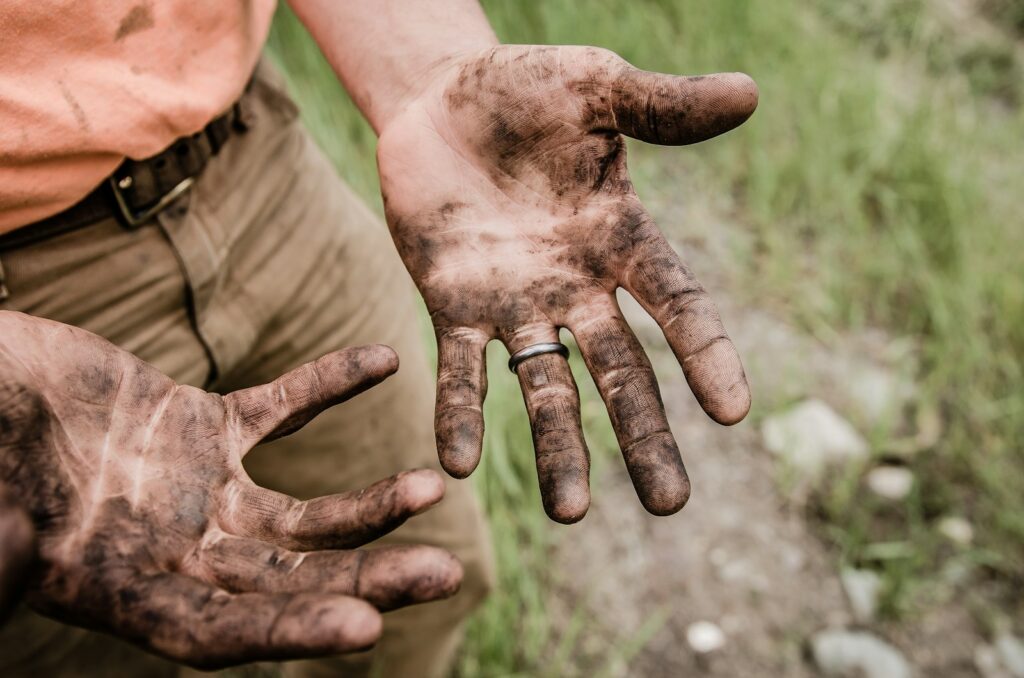Here is a similar guide on Lawn Dressing if you are not familiar with adding topsoil vs. lawn dressing, feel free to read both articles on the topic. The key difference between topsoil and lawn dressing is the thickness of the layer being spread over the soil. Topsoil is the top layer of your lawn, whereas lawn dressing is a method used to treat the topsoil with nutrients.

What is Topsoil?
Topsoil is the uppermost layer of soil, which typically measures between 2 and 8 inches deep. It is the top layer of the earth’s crust and is composed of various sizes of mineral particles, such as sand, silt, and clay, mixed with decomposed organic matter called humus. Good quality topsoil is prized by gardeners and landscapers because it contains the highest concentration of organic matter and microorganisms, making it fertile and ideal for planting. Understanding topsoil and how to use it effectively is key to any successful gardening project, whether you’re cultivating a lush lawn, a vibrant vegetable garden, or a diverse landscape.
The Importance of Topsoil Quality
The quality of topsoil can vary significantly and will greatly influence plant health and growth. High-quality topsoil should be dark in color, indicating a high organic matter content, and have a loose, crumbly texture that retains moisture yet drains well. It should be free of contaminants, such as heavy metals or other pollutants, and should not have an excess of stones or debris.
1. Choosing the Right Topsoil
For this article in particular, the goal is to inform you on topsoil for Grass. Much of the information out there will be directed at topsoil for gardening, and although many of the same principals apply, you will be looking for a slightly different soil composition for lawn topsoil rather than garden topsoil. The three main types of topsoil are clay, sandy, and loamy soils, each with unique characteristics that make them suitable for different gardening needs.
- The gold standard among topsoils is loamy soil, which offers the best of both worlds. It’s a well-balanced mixture of sand, silt, and clay, providing both moisture retention and sufficient drainage. Loamy soil is rich in nutrients and organic matter, making it ideal for a wide variety of plants. It maintains a neutral pH balance, which is suitable for most vegetables and flowers, and it’s often the go-to choice for gardeners looking to ensure their garden flourishes.
- Clay soil is dense and retains moisture well, making it a good option for plants that require more water. However, its heavy nature can lead to poor drainage and may need amending with organic matter to improve aeration and nutrient content.
- Sandy soil is light and promotes excellent drainage, which is beneficial for plants prone to root rot due to excessive moisture. Yet, it often requires more frequent watering and fertilization as it does not hold nutrients as effectively as other soil types.
There are a few small tests that you can perform to analyze the quality of topsoil. When touching it between your fingers, you should feel a slight gritty or graininess too it. If it is too clumpy, that means that there is too much clay in the topsoil. If is light in color or extremely dry, that might mean that it is too sandy, or lacks organic material.

2. Screen Your Topsoil Before Planting
Screening topsoil removes rocks, roots, and clumps of clay, creating a uniform and manageable product. This process can be done with a soil sifter or screen, and it’s an essential step for creating a fine seedbed for lawns and gardens. A loamy topsoil, screened to remove large particles, provides a level surface for seed sowing or turf laying. Incorporate composted organic matter into your topsoil to boost nutrient levels.
3. Spread Evenly and Integrate into Existing Soil
Use a garden rake to spread the topsoil evenly across the area. You can also rent or purchase a spreader, but this is less effective with topsoil due to the thickness of it. When dealing with lawns, a depth of 6-8 inches of topsoil is sufficient. Mix the new topsoil with the existing soil to avoid creating a sharp soil interface, which can hinder water movement and root penetration. Consider using an aerator at this step to spread the healthy soil to deeper layers of the dirt.
Conclusion
Topsoil is the foundation of garden health, playing a critical role in supporting robust plant growth. By choosing the right type of topsoil, ensuring it’s well-screened and free of contaminants, and maintaining it responsibly, you can enhance your garden’s productivity and sustainability. Remember, investing time and care into understanding and managing your topsoil is one of the most important contributions you can make to your garden’s ecosystem.
Here is an outbound link to another website if you still want to learn more from other authoritative sources in our industry. https://thegrassoutlet.com/grass-care/before-you-plant/topsoil-and-grading/

